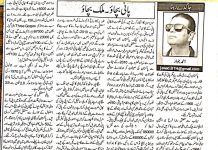Pakistan telecommunications sector has reached new benchmarks as its investment, including proceeds from spectrum auction, has reached $2.668 billion, and the much-awaited indigenous manufacturing of the cellular handsets has been launched. A joint venture of Haier Pakistan and Ruba SEZ Group is establishing a plant near Lahore for progressive manufacturing of mobile phone-sets at a cost of $5 million. In the first phase, the plant will assemble 1,500,000 units annually to cater to the demand of low-cost sets in the domestic market, for which the parts and components will be imported from China. The plant, which is scheduled to start operations by April this year, will also assemble laptops.
Subsequently, a component manufacturing unit is planned for installation to produce low-, middle-, and high- end devices for communication and data sharing, ranging in the price of equivalent $15 to $300 per unit. In the next phase, manufacturing of an entire range of cellular phone sets, from basic handsets to smartphones and tablets to cater to 3G/4G needs, with increased production volume, would be undertaken. Components and spare parts produced locally can also be supplied to the Original Equipment Manufacturers (OEMs) under co-manufacturing arrangements.
Given that Pakistan is one of the largest consumers of mobile handsets in the region, the government has been considering for long to establish facilities for manufacturing-cum-assembly of cellular handsets, but, apparently, the seriousness was lacking and no special measures were adopted in this direction. Sometime in 2009, the Ministry of Information Technology had initiated talks with the Chinese companies to set up manufacturing facilities for low-cost cellular handsets. These included Zong, China Mobile and Huawei Technologies that have strong presence in the telecom sector. Earlier, the Board of Investment had explored the possibilities with the leading mobile handset OEMs, such as Nokia, Siemens and LG, and also with the local Telecom Foundation and Advance Telecom, to consider progressive manufacturing of their products locally.
However, none of the proposed projects could materialize, though some of the companies did show interest in the proposal. Thus, till recently, the government had failed to create conducive environments for indigenous manufacturing of handsets. It was only in December 2015 that the Telecommunications Policy 2015 provided comprehensive incentive package for indigenous manufacturing of telecom equipment, including handsets. Under the policy framework, various fiscal and financial concessions and benefits have been extended to the prospective investors. Resultantly, the efforts to launch local manufacturing of cellular units have finally been successful.
Haier is the Chinese consumer appliances company, which has recently acquired General Electric (GE) USA appliances business. Haier smartphones have already been introduced in the domestic market. Ruba SEZ Group based in Lahore has partnership with many Chinese companies, also dealing in cellular phones. The salutary initiative will open new opportunities for promoting the growth of indigenous affordable mobile handsets, limiting increased presence of foreign brands in the market, and at the same time developing auxiliary industry for accessories, packaging and software etc.
The basic handset consists of 40-60 components of hardware and software, most of which can be produced availing existing facilities, while key semiconductor components can be imported from the OEMs. Instead of duplicating manufacturing facilities, it will be advisable to utilize optimally the existing infrastructure. Pakistan is well placed in communication electronics and consumer electronics in terms of technology, production facilities and human resources. In fact, component supply base already exists. Multinationals like Siemens, ZTE, local public sector companies such as Telephone Industries of Pakistan (TIP), Carrier Telephone Industries (CTI), National Radio Telecommunication Corp (NRTC) and National Institute of Electronics (NIE), and a host of private companies are actively engaged in the field.
A hi-tech telecom company, Comcept (Private) Ltd, is developer and manufacturer of analog and digital electronics, telecom systems, firmware, application software etc., meeting domestic demand and exporting its products. The cellular handset industry is labor intensive and it will create additional job opportunities. Once we master the technology and achieve significant local market share, Pakistani mobile handsets may be introduced in export markets as well. The African, Middle Eastern and parts of South Asian countries are growing markets for low-cost cellular handsets, in particular.
Today, there are about 128 million, (compared to 5 million in 2003-04) annual cellular subscribers to mobile phone network, including over 24 million 3G/4G subscribers, with cellular mobile tele-density of 66.2 per cent. It is obvious that the number of subscribers is increasing exponentially. There are six cellular mobile operators using various technologies such as GSM, UMTS, NGMS and LTE. Total number of active handsets is estimated at 130 million, and legal and grey imports of large numbers continue. During 2014-15 legal import of mobile phone handsets amounted to $654 million, whereas imports of two months (July-August 2015) of current fiscal year were of $105 million.
According to a survey, about 20 percent of mobile phone users change their sets thrice a year, another 20 percent once a year and another 20 per cent after every two years. Though late, Pakistan should be able to catch-up with its neighboring countries. Since 2006, India is manufacturing cellular handsets including smartphones and tablets for domestic and export markets. It had produced over 100 million units last year, and is poised to achieve shortly 25 percent share in global mobile-phone manufacturing segment. Likewise, Indonesia has recently launched assembly of 4G-capable smartphones.







